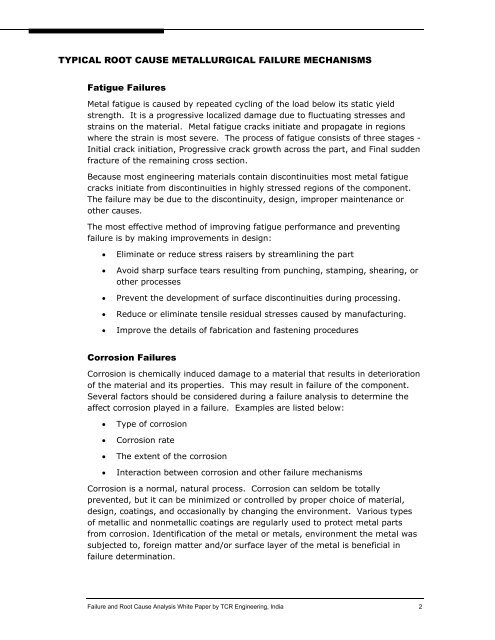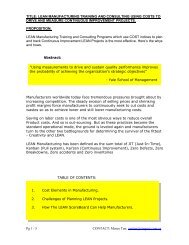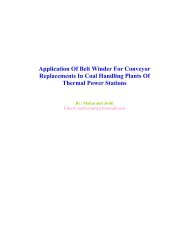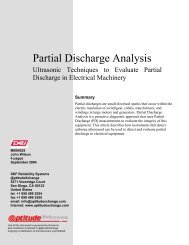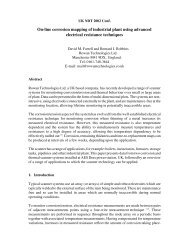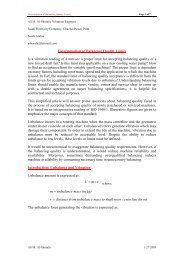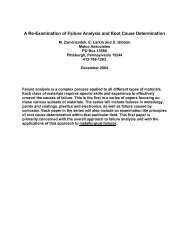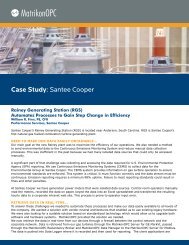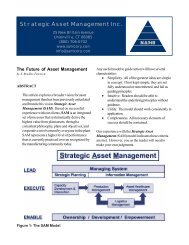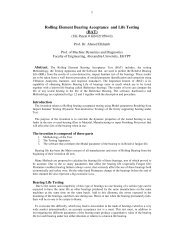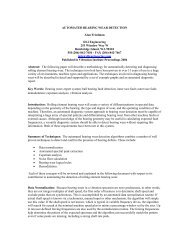Investigating Material and Component Failure - TCR Engineering ...
Investigating Material and Component Failure - TCR Engineering ...
Investigating Material and Component Failure - TCR Engineering ...
You also want an ePaper? Increase the reach of your titles
YUMPU automatically turns print PDFs into web optimized ePapers that Google loves.
TYPICAL ROOT CAUSE METALLURGICAL FAILURE MECHANISMS<br />
Fatigue <strong>Failure</strong>s<br />
Metal fatigue is caused by repeated cycling of the load below its static yield<br />
strength. It is a progressive localized damage due to fluctuating stresses <strong>and</strong><br />
strains on the material. Metal fatigue cracks initiate <strong>and</strong> propagate in regions<br />
where the strain is most severe. The process of fatigue consists of three stages -<br />
Initial crack initiation, Progressive crack growth across the part, <strong>and</strong> Final sudden<br />
fracture of the remaining cross section.<br />
Because most engineering materials contain discontinuities most metal fatigue<br />
cracks initiate from discontinuities in highly stressed regions of the component.<br />
The failure may be due to the discontinuity, design, improper maintenance or<br />
other causes.<br />
The most effective method of improving fatigue performance <strong>and</strong> preventing<br />
failure is by making improvements in design:<br />
• Eliminate or reduce stress raisers by streamlining the part<br />
• Avoid sharp surface tears resulting from punching, stamping, shearing, or<br />
other processes<br />
• Prevent the development of surface discontinuities during processing.<br />
• Reduce or eliminate tensile residual stresses caused by manufacturing.<br />
• Improve the details of fabrication <strong>and</strong> fastening procedures<br />
Corrosion <strong>Failure</strong>s<br />
Corrosion is chemically induced damage to a material that results in deterioration<br />
of the material <strong>and</strong> its properties. This may result in failure of the component.<br />
Several factors should be considered during a failure analysis to determine the<br />
affect corrosion played in a failure. Examples are listed below:<br />
• Type of corrosion<br />
• Corrosion rate<br />
• The extent of the corrosion<br />
• Interaction between corrosion <strong>and</strong> other failure mechanisms<br />
Corrosion is a normal, natural process. Corrosion can seldom be totally<br />
prevented, but it can be minimized or controlled by proper choice of material,<br />
design, coatings, <strong>and</strong> occasionally by changing the environment. Various types<br />
of metallic <strong>and</strong> nonmetallic coatings are regularly used to protect metal parts<br />
from corrosion. Identification of the metal or metals, environment the metal was<br />
subjected to, foreign matter <strong>and</strong>/or surface layer of the metal is beneficial in<br />
failure determination.<br />
<strong>Failure</strong> <strong>and</strong> Root Cause Analysis White Paper by <strong>TCR</strong> <strong>Engineering</strong>, India 2


